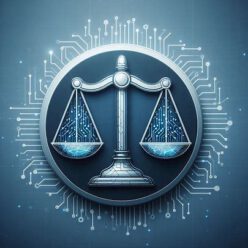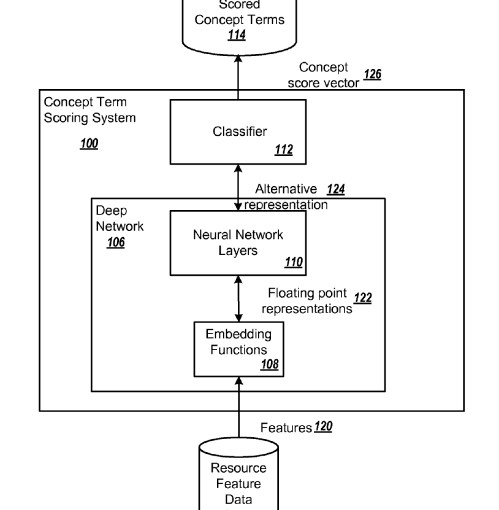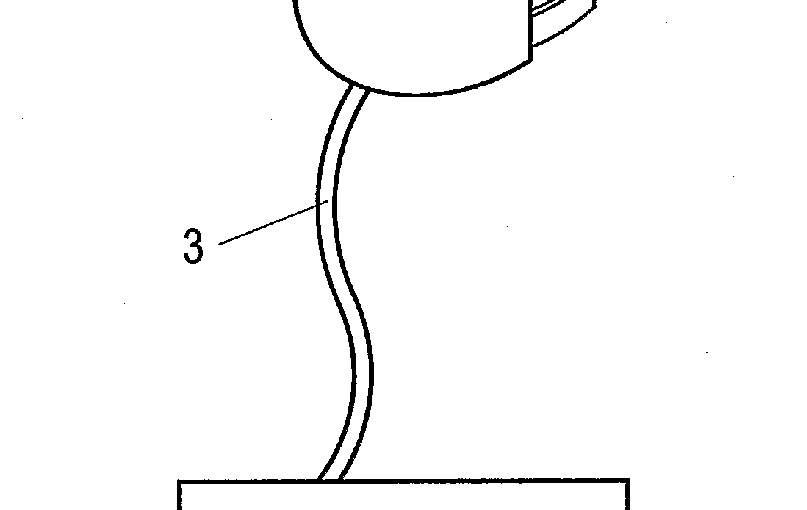In this decision, the appellant stated that a “web page” is a physical entity, corresponding to an “image”. The Board has considerable doubts about this. In fact, the inventive step did not depend on this.
Object of the Invention:
- the subject matter relates to online advertisement auctions
- when an online advertisement auction is to be conducted to select one or more advertisements to be included in a resource/ web page, resource features are extracted from the web page
- a concept term scoring system uses the received resource features to predict a vector of scores that includes a score for each of the set of concept terms/ advertising features
- in online advertising, the concept term scoring system can generate a score for each of a set of concept terms that may be used as advertising keywords for selecting advertisements for participation in the auction
- the concept term scoring system includes a deep network and a classifier
- Claim 1 differs from the closest prior art inter alia in that it is configured to process the alternative representation of the input to generate a respective relevance score for each concept term in a pre-determined set of concept terms, wherein each of the respective relevance scores measures a predicted relevance of the corresponding concept term to the resource
Appellant I (inventive step – 3rd auxiliary request)
- the objective problem to be solved was to provide a more accurate representation of the resource features by generating an alternative representation of these resource features “in a new way”
- in decision T 208/84, point 3, the board found that a method for image processing was susceptible of industrial application
- T 208/84 stated the following: “Clearly a method for obtaining and/or reproducing an image of a physical object or even an image of a simulated object (as in computer-aided design/computer-aided manufacturing (CAD/CAM) systems) may be used e.g. in investigating properties of the object or designing an industrial article and is therefore susceptible of industrial application. Similarly, a method for enhancing or restoring such an image, without adding to its informational content, had to be considered as susceptible of industrial application.“
- in T 208/84, points 6 and 7, the board stated that it was of the opinion that “even if the idea underlying an invention may be considered to reside in a mathematical method a claim directed to a technical process in which the method is used does not seek protection for the mathematical method as such” and concluded that “[i]n contrast, a ‘method for digitally filtering data’ remains an abstract notion not distinguished from a mathematical method so long as it is not specified what physical entity is represented by the data and forms the subject of a technical process, i.e. a process which is susceptible of industrial application“
- thus, the board equated a “technical process” with “a process susceptible of industrial application“
- in accordance with the case law, “processing images” was considered as being susceptible of industrial application and thus was technical
- according to the appellant a “web page” is a “physical entity”
Board I (inventive step – 3rd auxiliary request)
- the board agrees that the electrical signals producing the “web page” are physical entities and that a web page printed on a piece of paper becomes physical
- but it has strong doubts that a “web page” can be considered as a “physical entity“
- rather, a “web page” is data representing information
Appellant II (inventive step – 3rd auxiliary request)
- it would thus be correct to consider processing other entities, such as text, to be technical as well
- the appellant questioned the difference between processing images versus processing text: the words in a particular language had a meaning (except for nonsensical words or sounds) that a (sufficient) number of people understood in the same manner as a (sufficient) number of people recognised a particular colour as being “red”, for example, even though this understanding was not “universal”
- both an image and a web page were physical entities and that the claimed system concerned the processing, i.e. the analysing and classification, of physical entities
- the classification of images had been recognised in the case law as solving a technical problem
Board II (inventive step – 3rd auxiliary request)
- the board did not consider whether the system of claim 1 might be susceptible of industrial application but indeed whether the system had a technical effect going beyond the mere implementation of a non-technical method on one or more computers
- however, providing a more accurate “alternative representation” of the resource features, and therefore refined relevance scores, is not a technical effect since the relevance scores do not constitute technical features
- this does not depend on whether the “resources” are text, web pages, images or multimedia content, as in page 1, lines 4 to 5, of the description, and thus does not depend on whether the “resource features” are features of text, web pages, images or multimedia content (G 1/19 of 10 March 2021, Reasons 126, last sentence; see also T 1924/17 of 29 July 2019, Reasons 12 to 13).
Board III (inventive step – 3rd auxiliary request)
- the relevance scores measure a predicted relevance of the “concept terms” to the resource
- taking the example of an “image” as a “resource”, the concept term might be “cat“
- the (first) relevance of this “concept term” to a first image comprising only dogs might be lower than its (second) relevance to a second image comprising exactly one dog and one cat, which might itself be lower than its (third) relevance to a third image comprising two cats or more, as an example
- inversely, the three images exemplified here might be classified by their relevance to the concept term “cat”: the third image is more relevant than the second image, which is itself more relevant than the first image
- the system of claim 1 does not explicitly stipulate that the classifier is also “configured to classify the concept terms” or “configured to classify the resources”
- on the contrary, the description on page 6, lines 10 to 13 discloses that it is the concept term scoring system and not the classifier that orders the concept terms based on the alternative representation
- moreover, not all image classifications solve a technical problem
- if a user classifies displayed images via a user interface to have the images arranged according to the user’s viewing preferences, the image classification will, in most cases, not solve a technical problem
- in the absence of any technical effect beyond its mere implementation in one or more computers, the subject matter of claim 1 of the first to third auxiliary requests cannot be considered to involve an inventive step



